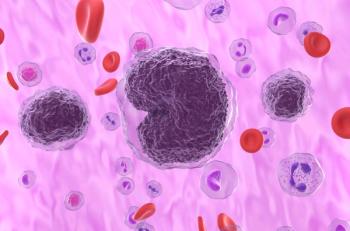
Need for Ventilation in Children With SMA Is Linked to Respiratory Function
Children with spinal muscular atrophy (SMA) who require noninvasive ventilation had more severe impairments in respiratory function than those who do not, according to findings of a new study.
Children with spinal muscular atrophy (SMA) who require noninvasive ventilation (NIV) had more severe impairments in respiratory function than those who do not, according to findings of a new study.
The study, published in Pediatric Pulmonology, enrolled 25 children with SMA who had never taken the new disease-modifying drug nusinersen. Their median age was 8.96 years; 3 children had type 1, 15 had type 2, and 7 had type 3 disease. As part of the study, the children underwent a polysomnography test and were asked to perform several tests of respiratory function. Some of the tests were not completed by younger children who had difficulty understanding and cooperating with the test instructions.
Ten of the children were habitually using NIV nocturnally at the time of the study; 5 of them began after a sleep study showed sleep-disordered breathing, and the other 5 began during an admission to the pediatric intensive care unit for a lower respiratory tract infection.
The children receiving NIV tended to be older than those who were not (median, 10.52 vs 5.67 years; P <.02) and they had more abnormal z scores for 2 measures of respiratory function, forced vital capacity (P <.02) and resistance at 8 Hz (P = .04). The children receiving NIV also had higher median lung clearance index (LCI) values, indicating more abnormal ventilation distribution (8.84 vs 7.34; P = .01). All children who received NIV had an LCI greater than 7, and the 3 children with an LCI greater than 8 were all receiving NIV.
The polysomnography test findings showed that children needing NIV had a higher apnea-hypopnea index, both overall and during rapid eye movement sleep, and a higher maximum transcutaneous carbon dioxide level than those not receiving NIV. The researchers also found that children treated with NIV saw significant improvements in each of those measures between their diagnostic polysomnography test and the later polysomnography test used to titrate NIV.
The study authors noted that although consensus statements on SMA best practices recommend NIV treatment for all children with SMA who are symptomatic or unable to sit independently, resource constraints and parental reluctance have led to this approach not being followed in some parts of the world, including Australia, where the study took place.
“Improved evidence for clinical indications, timing and benefits of NIV are required to avoid intensive care admissions and to provide evidence for NIV to funding bodies,” they wrote.
The findings suggest that respiratory function scores could indicate which patients with SMA should undergo polysomnography tests to screen for sleep-disordered breathing, as well as which patients are more likely to need NIV after a lower respiratory tract infection. Future studies should analyze the influence of treatment with nusinersen on these markers of respiratory function, the investigators added.
“The ability to predict the need for NIV is important in resource allocation for both [polysomnography] and NIV equipment allocation, and will also be important in development [of] guidelines for respiratory care in SMA where directing resources to those at highest clinical risk is essential,” they concluded.
Reference
Kapur N, Deegan S, Parakh A, Gauld L. Relationship between respiratory function and need for NIV in childhood SMA [published online July 21, 2019]. Pediatr Pulmonol. doi: 10.1002/ppul.24455.
Newsletter
Stay ahead of policy, cost, and value—subscribe to AJMC for expert insights at the intersection of clinical care and health economics.













































